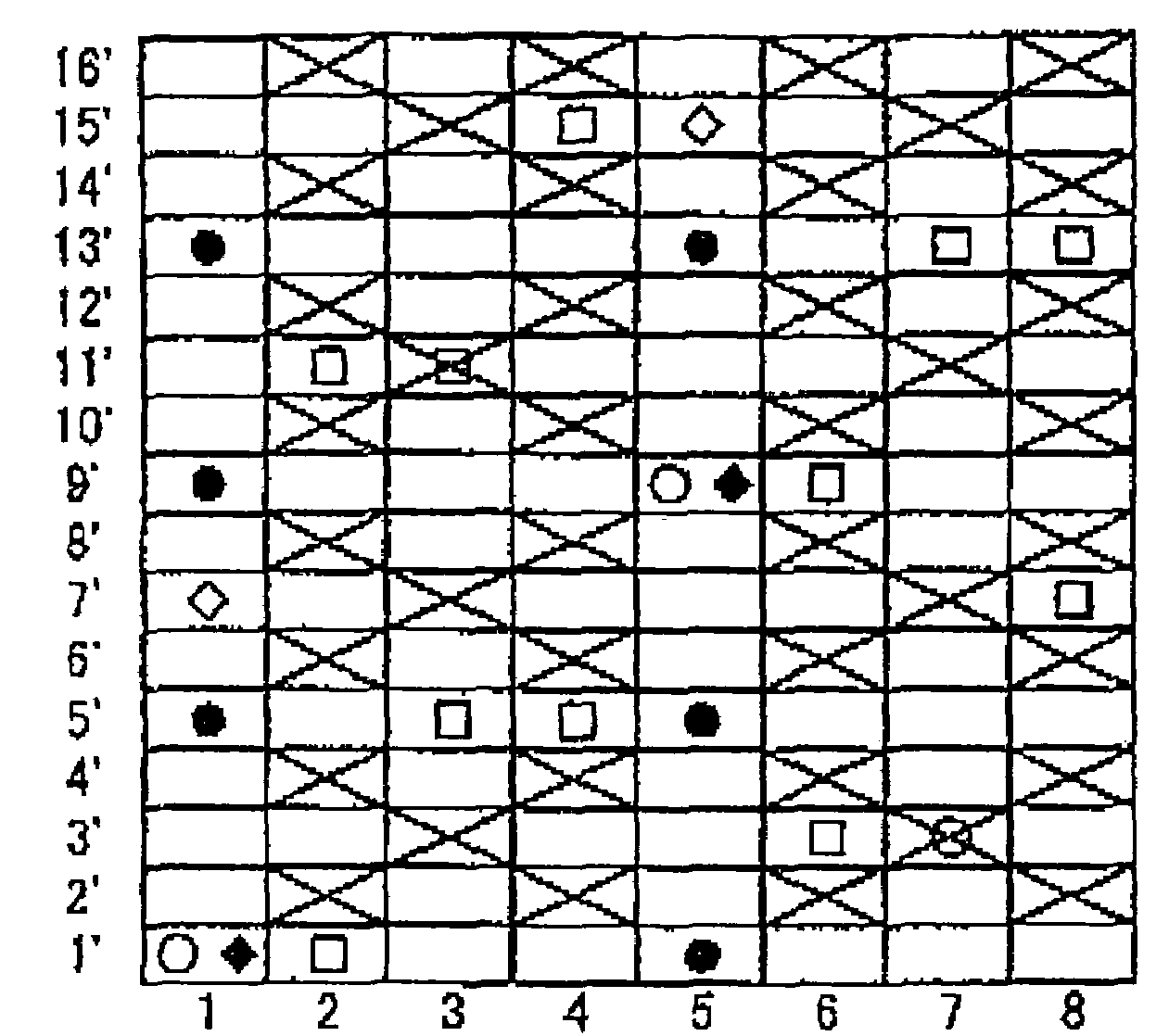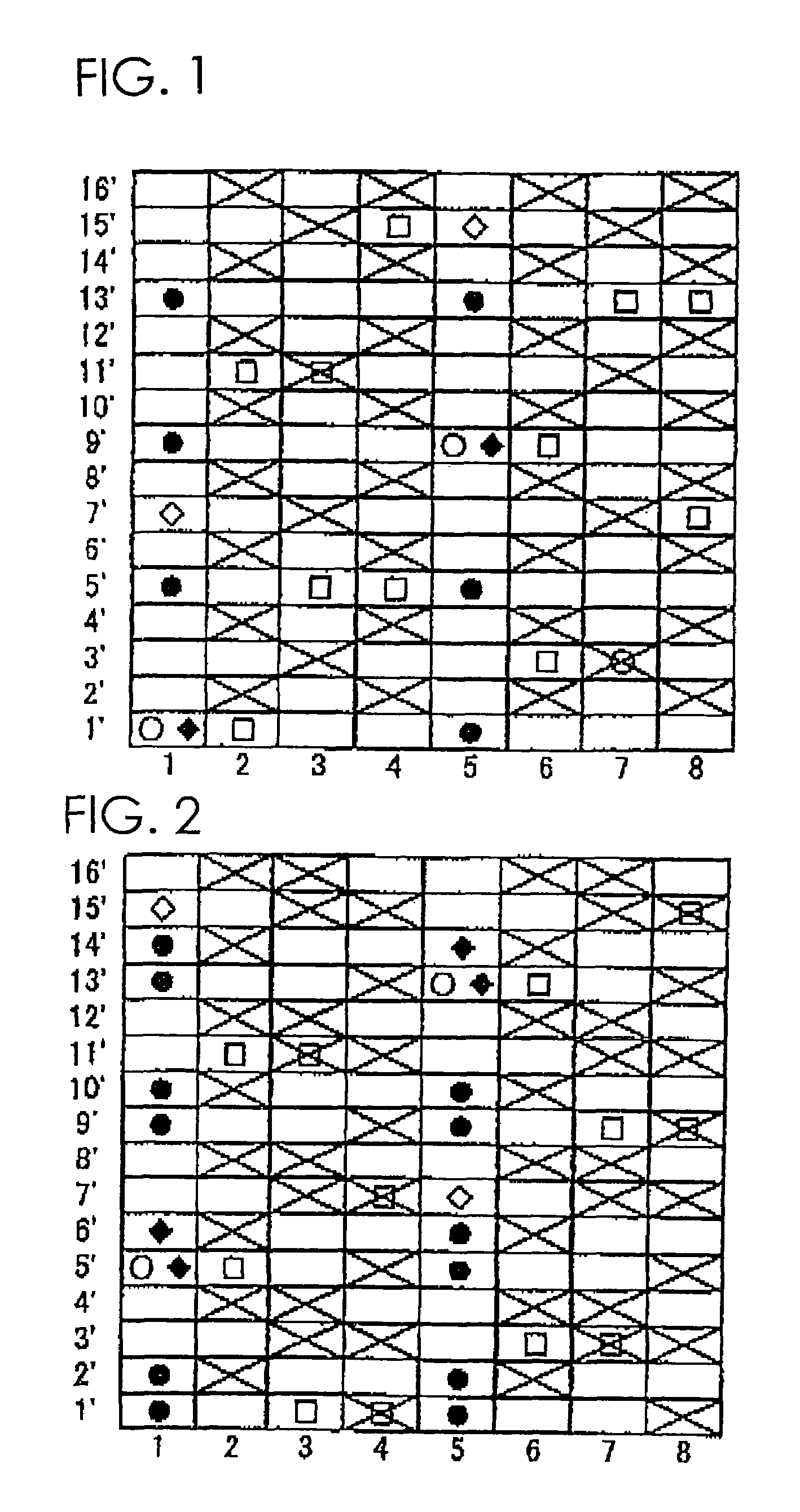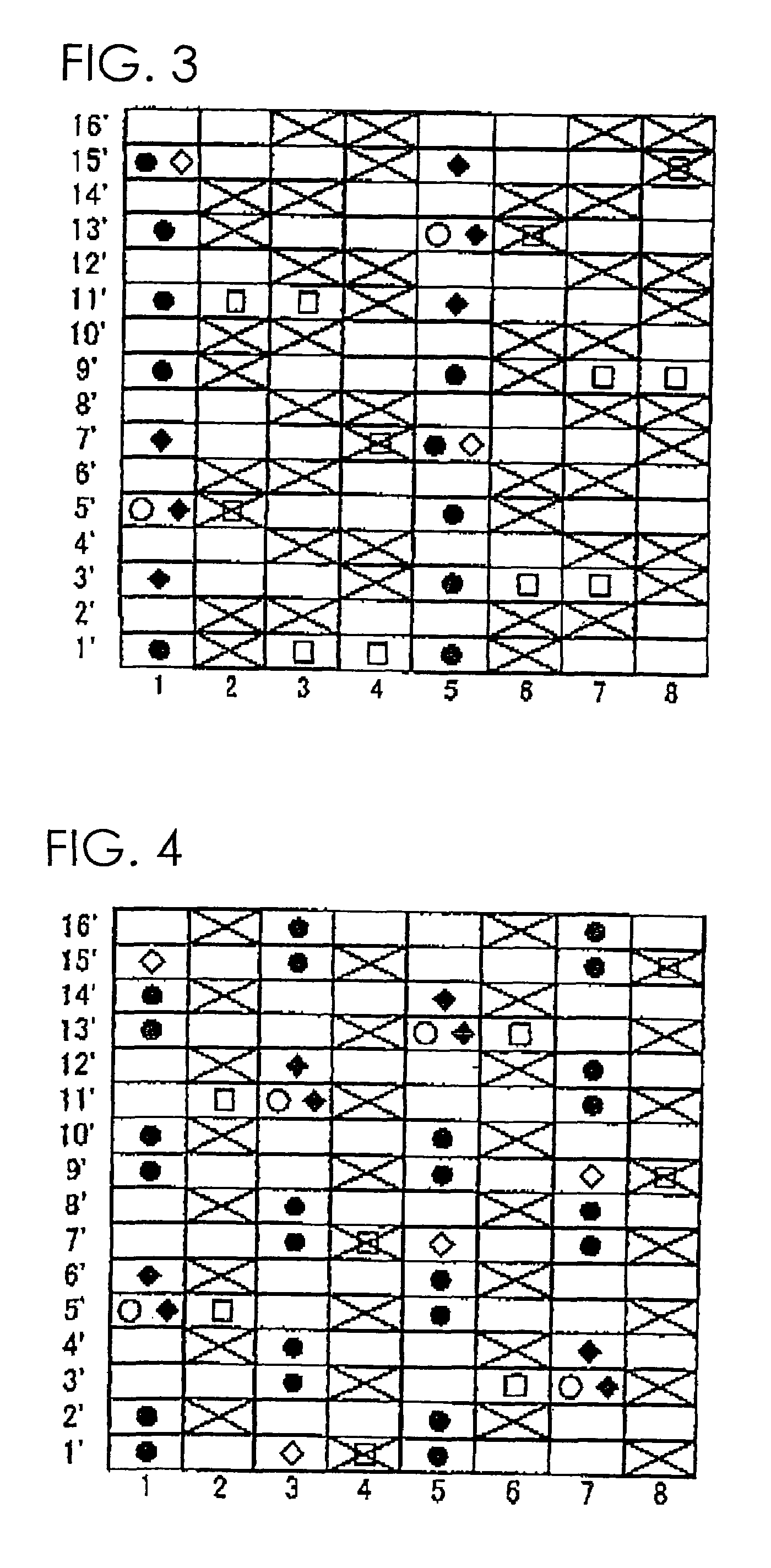Industrial two-layer fabric
a fabric and two-layer technology, applied in the field of industrial fabric, can solve the problems of poor water drainage property and air permeability, difficulty in increasing the number of wefts, and forming a dense surface, and achieve the effects of improving surface properties, fiber support properties, and rigidity
- Summary
- Abstract
- Description
- Claims
- Application Information
AI Technical Summary
Benefits of technology
Problems solved by technology
Method used
Image
Examples
example 1
[0048]In the design diagram of FIG. 1, indicated at numerals 2, 3, 4, 6, 7 and 8 are pairs of an upper surface side warp and a lower surface side warp arranged vertically, while indicated at numerals 1 and 5 are pairs of warp binding yarns. Indicated at 1′, 2′, and 3′ to 16′ are wefts and an upper surface side weft and a lower surface side weft are arranged vertically. Upper surface side wefts and lower surface side wefts are arranged at 2:1 and they are arranged vertically with the lower surface side wefts being laid under odd-numbered upper surface side wefts.
[0049]As is apparent from the cross-sectional views of FIGS. 13A and 13B taken along warps 1 and 2, the fabric of Example 1 is a 16-shaft two-layer fabric obtained by alternately arranging, on the upper surface side surface of the fabric, a warp complete design obtained by repeating a design in which a warp passes over one upper surface side weft and then passes under one upper surface side weft and another warp complete desi...
example 2
[0056]Another example of the fabric according to the present invention is shown in FIG. 2. This fabric is a 16-shaft two-layer fabric having, on the upper surface side surface thereof, alternately arranged two warp complete designs, that is, a warp complete design obtained by repeating a design in which a warp passes over one upper surface side weft and then passes under one upper surface side weft and a warp complete design obtained by repeating a design in which a warp passes over two upper surface side wefts and then passes under two upper surface side wefts. Pairs of warp binding yarns and pair of an upper surface side warp and a lower surface side warp are arranged at a ratio of 1:3. The pairs of warp binding yarns form, on the upper surface side surface, a warp complete design obtained by repeating a design in which it passes over two upper surface side wefts and then passes under two upper surface side wefts.
[0057]This example is different from Example 1 in a warp complete de...
example 3
[0059]A further example of the fabric according to the present invention is illustrated in FIG. 3. The fabric of this example has a similar upper surface side surface design to that of Example 2 except that pairs of warp binding yarn have, on the upper surface side surface, a warp complete design obtained by repeating a design in which a warp binding yarn passes over one upper surface side weft and then passes under one upper surface side weft. Even by this example, a fabric excellent in surface property, fiber supporting property, rigidity, air permeability and water drainage property and having an upper surface side surface densified by an increase in the count can be obtained.
PUM
 Login to View More
Login to View More Abstract
Description
Claims
Application Information
 Login to View More
Login to View More - R&D
- Intellectual Property
- Life Sciences
- Materials
- Tech Scout
- Unparalleled Data Quality
- Higher Quality Content
- 60% Fewer Hallucinations
Browse by: Latest US Patents, China's latest patents, Technical Efficacy Thesaurus, Application Domain, Technology Topic, Popular Technical Reports.
© 2025 PatSnap. All rights reserved.Legal|Privacy policy|Modern Slavery Act Transparency Statement|Sitemap|About US| Contact US: help@patsnap.com



